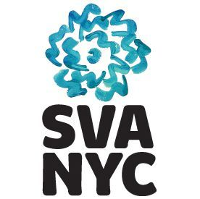New York’s Vibrant Animation History – It All Started Here: Part 2

Photo courtesy of J.J. Sedelmaier

Photo courtesy of J.J. Sedelmaier
Today we bring you Part Two of Richard Gorey’s review of the It All Started Here exhibition, brought to you by Howard Beckerman and J. J. Sedelmaier.
It All Started Here: Part 2
Review by Richard Gorey.
It All Started Here took up two levels of gallery space. The first floor, dominated by a life-sized cutout of Gertie the Dinosaur, was dedicated to the storyboards and designs of the classic theatrical cartoons. Further back were examples of TV ads from the fifties: work that kept many New York studios in the black during that time, when theatrical shorts became largely extinct. Visitors got a chance to see art and the final spots from the famous “Bert and Harry” Piel’s Beer ads, a sampling of some of the UPA films and television spots from the same era, and the work of artists like Jules Feiffer, whose social satire Munro was represented by the complete rough storyboards, on a wall dedicated to these charming sketches. The gallery’s vault (a novel and distinctive element of the former bank’s aesthetic appeal) opened to a series of projected commercials and short films created on Madison Avenue. Co-curator Sedelmaier’s work, including the series of ribald cartoons created for Saturday Night Live, was featured on the second floor, though when these films were run the more controversial dialogue snippets were bleeped, sadly.
I sometimes wonder as a teacher of animation what people think of these days when they hear the word. “Animation” used to mean creating life (or the illusion of life) one drawing at a time with a pencil on paper. To my generation it most often meant having a personal investment in every frame. Such intimate and confessional works are showcased in the gallery, notably Michael Sporn’s Champagne, a sobering real-life account of a young girl coming to terms with her mother’s incarceration for murder. The curators managed a thorough job of including and championing works from every style and motivation: this was not merely a retrospective of television cartoons or well-known characters, though Mighty Mouse, Heckle and Jekyll, and Casper the Friendly Ghost were prominently on view.

Photo courtesy of J.J. Sedelmaier
Is there a “New York” personality in East-coast animation–one distinct and unique from the West Coast films? Writers like Leslie Cabarga (“The Fleischer Story”) and other film historians agree there is: something brash, irreverent, sometimes obnoxious, and decidedly confrontational that surfaces in many films animated by New Yorkers. Popeye certainly had rough edges in his personality and his animation, and the recent films created by Sedelmaier have a crude, puckish nature that is a delight to many audiences and occasionally off-putting to others.
It All Started Here serves as a reminder that for the first two decades of animation’s existence it was an industry which grew and evolved in the midst of this New York/East-coast sensibility. Early films were ribald, rude, funny, and even shocking. They still are: go to any New York festival and you’ll see stories about as far a field from the childlike wonders of California animation as you’re likely to get. There is something angry, raw, and challenging in this work, but the Westchester Arts show also boasted examples of the physical art taken to stunning extremes. The feature films and shorts produced at Blue Sky (Which until recently was located on Main Street, in White Plains) are sterling examples of “state of the art” in design, execution, writing and direction.
“The thing is, it seems people have forgotten everything,” Beckerman offers. “Not just where the studios were located and who worked there, but the films themselves, many of which have been lost to history. The computer is a great tool, and it’s taken over, but we should remember that the computer merely copied everything we used to do by hand.” In many ways, the computer has streamlined the process: in others it has pushed the limits of what is possible regarding rendering, detail, and surface modeling. But the inspiration that designs and moves the characters is still an internal, human province.
The show features a century’s worth of material but even the most historic pieces felt fresh–if not in physical style than in their humor and accessibility. I saw several patrons laughing out loud at a silent cartoon whose artwork was crude, but whose cavorting puppies retained their power to delight and amuse.

Photo courtesy of J.J. Sedelmaier
Design and flow of the show seems to have been carefully considered. Montages of art and written material featured numbered “key maps” which told in detail what each piece was and when it was created. The gallery space was filled with things to see, but didn’t feel crowded, claustrophobic, or haphazard. Three-dimensional models of characters from Blue Sky’s Robots and the Ice Age films were welcome additions, offering a more tactile sense of the process by which animals and vehicles are realized and rendered in modern feature films. A computer used to create very early 3-D animation looks frighteningly primitive until one realizes it was built (and one suspects abandoned) in the early nineties.
One interesting aspect of the gallery show was a letter written to Nickelodeon by an anonymous Mom, in which the woman berated the network for a logo she swears shows the main character wearing “two condoms” on his feet. “My son pointed it out to me,” the woman wrote, incensed, and a reader wonders how old the boy was, what he saw, what he thought he saw, and how he knew what a condom was…but never mind.
The letter was funny in itself, of course, but it did shine a spotlight on the often-mature nature of the work created by the New York artists and writers. Films like The Ambiguously Gay Duo were designed for adults, and their inclusion in the gallery show may have seemed intimidating to those bringing small children, but the show’s function was to celebrate the diversity, risk-taking, controversy, and personal investment in the New York work, where animators create angry, chancy, rude, and challenging films. Sedelmaier’s irreverent and taboo-shattering style may have dictated his affinity for the more brash and outrageous pieces represented, but the show, which he conceptualized and organized, pays homage to several different methods and demographics.
For those who care about animation as an art form and mode of personal expression, it’s important to recognize that what most people think of as “cartoons” are often a tiny fraction of the work currently being produced-on both coasts. New York has a large independent community, and with the advent of computer technology and affordable software, many artists who might not have had the resources or finances to make films are now able to make intimate statements, some of which are troubling and even confrontational. Celebrating this freedom, that commitment, and the often-unsung contributions of the New York artists is a wonderful idea, and Sedelmaier’s show was a welcome addition to the historic record of the industry on the East Coast.
“I’d like people to come away from this exhibit knowing that that what ‘animation’ is can be much bigger than the popular features audiences see and remember,” Howard Beckerman says. “This was a chance to showcase some outstanding work that hasn’t really been given its’ due.”
In this, he and Sedelmaier have succeeded: the Westchester Arts Gallery reported its biggest audience ever, one Saturday during the show’s run. Looks as if New York animation is once again a big draw.

Photo courtesy of J.J. Sedelmaier






5 Comments
:: smo ::
March 10, 2009Wow! This looks amazing, thanks for documenting! I really wanted to go but couldn’t get out to it. Honestly I was a little confused that a show about animation in NYC didn’t take place in NYC [though space is definitely a justifiable reason!]. It’s seems like kind of a one time deal, but I hope the show can actually go back up in a gallery somewhere in NYC proper so even more people can see it!
David Levy
March 10, 2009Great post, Rich! An event of this quality deserves to be preserved forever. Your report does us all a great service.
cheers,
Dave
Elliot Cowan
March 11, 2009::smo::
JJ has made some rumblings about bringing it into the city, I believe.
justsim
March 13, 2009This was a great post, as well as a great show. For anyone who couldn’t make it it was very easy to get to White Plains. A hop skip and a jump on the train and you were there. Having been a part of gallery shows in the city, space is very,very hard to come by, especially for that length of time. Plus the fact that two of the organizers (JJ and Blue Sky) are outside of the city.
Topics about Animation-art » Archive » New York’s Vibrant Animation History - It All Started Here: Part 2 …
April 5, 2009[…] asifaeast placed an observative post today on New Yorkâ […]